When the Drivers Field of Vision Becomes Dim Again He or She May See Only
What Center Problems Look Like
Medically Reviewed by Poonam Sachdev on February 22, 2022
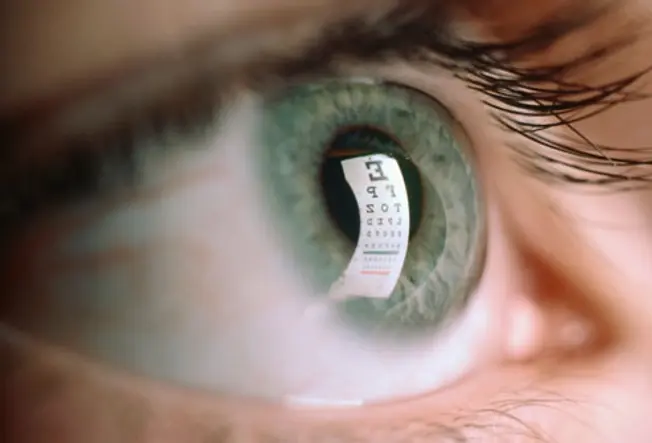
Alert Signs of Eye Trouble
ane/32
Blurry vision, spots, glare at night, flashing lights -- these are common eye complaints. Each could be a harmless annoyance or an early sign of disease. Information technology isn't always easy to tell the difference. Visit your middle dr. promptly if you notice whatsoever changes in your vision.
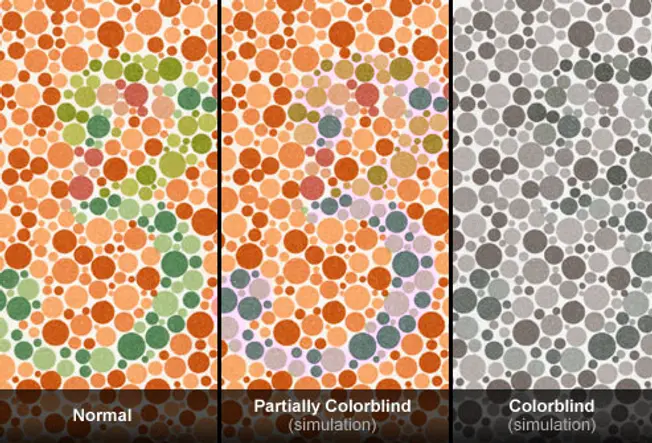
Color Blindness Exam
2/32
Which number do yous encounter on the far left? If information technology's "iii," you probably have normal color vision. If it's a "five," you may be colour blind. The eye console shows a mild lack of color vision. Complete color blindness, which is rare, appears at right. No number is visible. Tinted glasses may help you see meliorate.

Nearsightedness (Myopia)
3/32
When you're nearsighted, things in the altitude look blurry. Doctors telephone call it myopia. You lot're more likely to have it if:
- One or both of your parents take it
- You do lots of close-up reading
Nearsightedness tin can make information technology harder to bulldoze, play sports, or see a blackboard or Television receiver. Symptoms include blurred vision, squinting, and fatigue. To right information technology, you lot can wear glasses, contacts, or become surgery in some cases.

Farsightedness (Hyperopia)
four/32
Most people are born with mild farsightedness and outgrow it in babyhood. When information technology persists, you may see distant objects well, but books, knitting, and other close objects are a blur. This problem runs in families. Symptoms include trouble with reading, blurry vision at night, eyestrain, and headaches. To care for it, you may wear spectacles or contacts. Some people become surgery for it.
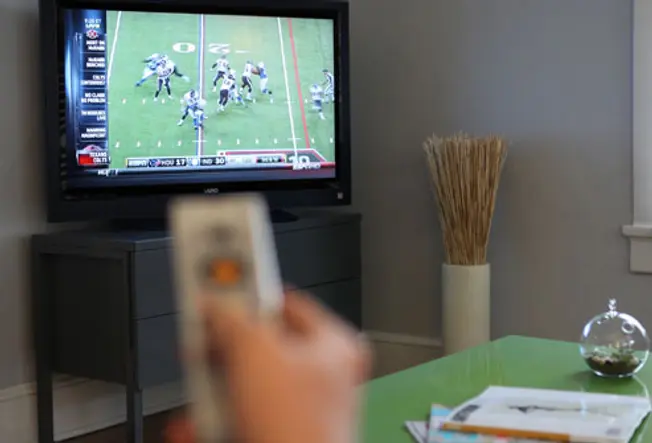
Presbyopia
5/32
Trouble reading fine print is a sign of aging. Information technology'due south called presbyopia, which means "sometime eye" in Greek. Most people first to notice it in their 40s. The eyes' lenses become less flexible and can't alter shape to focus on objects at reading distance. The solution: Article of clothing reading glasses or bifocals, which correct both near and distance vision. If you habiliment contacts, ask your eye doc about contacts made for people with presbyopia.
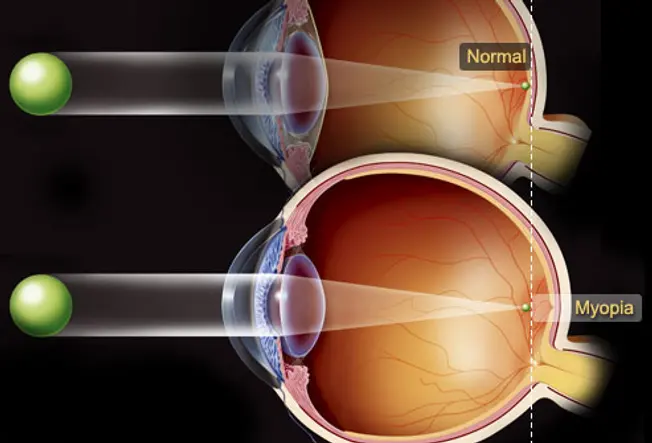
Nearsightedness: What Happens
vi/32
The cause is commonly an eyeball that is too long. Or information technology can consequence from an oddly-shaped cornea or lens. Lite rays focus just in front end of the retina, instead of directly on it. This sensitive membrane lines the back of the center (seen in yellow) and sends signals to the brain through the optic nerve. Nearsightedness often develops in schoolhouse-age children and teens, so they may need to alter glasses or contacts often as they grow. Multifocal contact lens or glasses and eye drops such every bit atropine can assist slow the progression. The prevalence of myopia has been ascension at an alarming rate, much of information technology being attributed to increased use of handheld devices and computers.
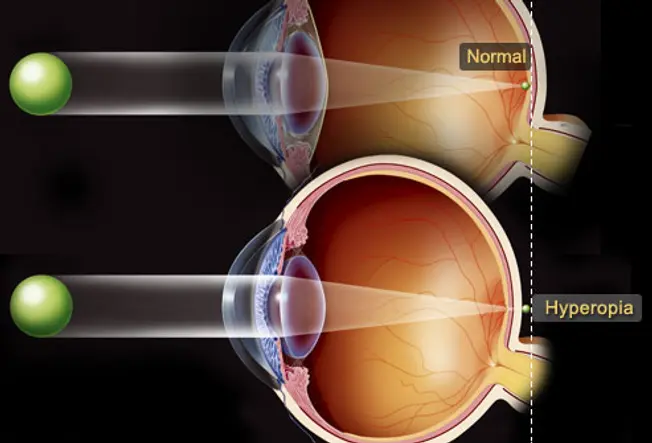
Farsightedness: What Happens
7/32
This problem results from an eyeball that is also short or an oddly-shaped lens or cornea. Low-cal rays focus behind your retina and close objects expect blurry. Your distance vision might be fuzzy, too. Severely farsighted children often take crossed eyes (strabismus) or lazy eye (amblyopia) and may have trouble reading. That's one reason middle doctors recommend vision exams for young children.
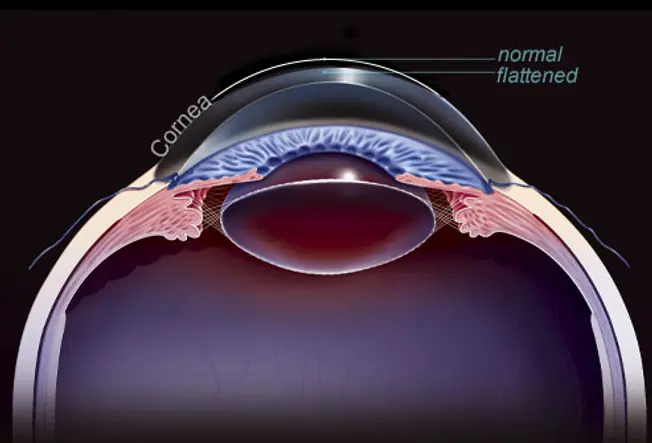
Astigmatism
8/32
If you take astigmatism in one or both eyes, your vision may exist out of focus at any distance. It happens when the cornea, the articulate "window" that covers the front of the eye, isn't shaped right. Calorie-free rays tin can't focus on a unmarried point on your retina. Instead they scatter to many places. Glasses or contact lenses correct information technology. Surgery may be an option. Symptoms include blurred vision, headaches, fatigue, and eye strain.
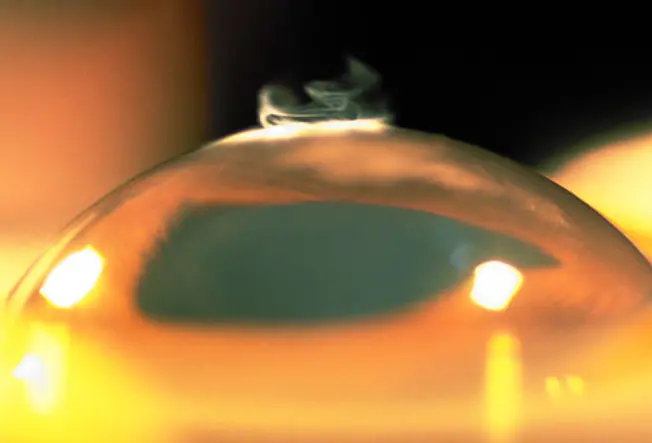
Refractive Centre Surgery
9/32
Do yous dream of seeing clearly without spectacles? Surgery to reshape your cornea can correct nearsightedness, farsightedness, or astigmatism with a success charge per unit of better than xc%. Surgery may not be right for you lot if you have astringent dry eye, sparse or oddly shaped corneas, or severe vision issues. Side furnishings include glare or sensitivity to light.

Glaucoma: View
ten/32
You can't feel it, just this disease damages your optic nerve. You may not take any symptoms until you lot lose your central vision. Your side vision will go first. That'due south why you demand regular heart exams every 1 to 2 years, especially later on you turn 40. Doctors can treat glaucoma with medications or surgery.
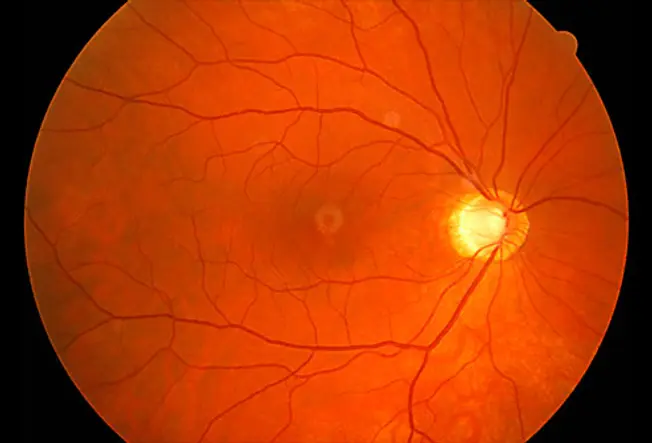
Glaucoma: What Happens
11/32
Your heart is filled with fluid. Sometimes likewise much of information technology builds upwards and raises force per unit area inside your eye. This can damage your optic nerve, a bundle of nerve fibers that carries information to your brain. Without treatment, glaucoma can crusade total incomprehension.
The bright yellow circle shows an optic nervus head damaged past glaucoma. The nighttime central expanse is the macula, which controls your finely-detailed key vision.

Macular Degeneration: View
12/32
Age-related macular degeneration (AMD) amercement and then destroys your central vision, making it hard to read or drive. Symptoms can include a central blurry spot or straight lines that announced wavy. You're more likely to have it if you are older than 60, smoke, have high claret pressure, are obese, are female person, or accept a family history of the condition. See your heart dr. regularly to check for AMD. Prompt treatment tin help dull vision loss.

Macular Degeneration: What Happens
thirteen/32
AMD affects the central part of your retina, called the macula. There are 2 types:
- Dry: Doctors ofttimes see yellow deposits chosen drusen in the macula. As it worsens, the macular tissue breaks down. That causes changes or loss of your central vision over time.
- Wet: Abnormal claret vessels grow in your middle. They leak blood and fluid (shown here), which causes scars and further damages the macula.
Both types exit you with a central blind spot.
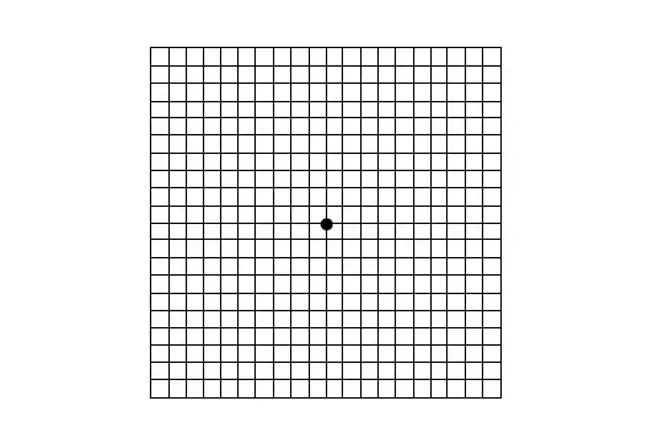
Macular Degeneration: Test
14/32
Cover one centre and stare at the center dot in this Amsler grid from a distance of 12 to xv inches. (You tin can wear your reading glasses.) Practice you see wavy, broken, or blurry lines? Are any areas warped or just plain gone? Repeat for your other eye. Although no self-examination can take the place of an centre exam, this grid is used to assistance spot early symptoms of AMD.
Adjacent:See how this grid looks with AMD.
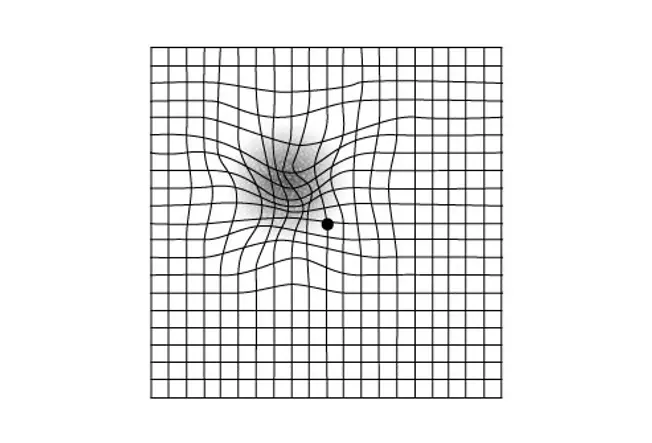
Macular Degeneration: Signs
15/32
Every bit seen hither, the Amsler grid can look quite distorted to if y'all take astringent macular degeneration. It may include a cardinal dark spot. Direct lines that appear wavy are also cause for business concern, every bit they tin can be an early symptom of moisture AMD, the more than serious, fast-moving blazon. See your eye dr. right away for a thorough test.

Diabetic Retinopathy: View
16/32
Type one and type ii diabetes can crusade partial vision loss (an example is shown here) and lead to incomprehension. The damage involves tiny blood vessels in your retina. Information technology can often be treated, but don't wait for symptoms. By the time you have them -- blurry vision, spots, shadows, or pain -- the illness may be severe. If y'all accept diabetes, get an almanac eye exam. The all-time prevention is to keep your blood sugar in check.
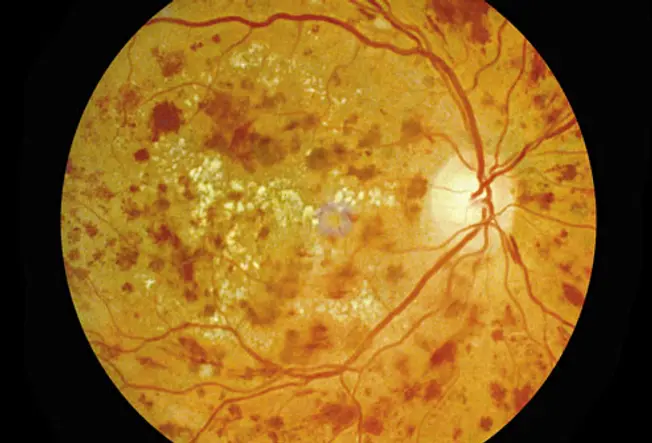
Diabetic Retinopathy: What Happens
17/32
Loftier blood carbohydrate levels impairment the tiny blood vessels that support your retina. They can keen, interruption, and leak fluid. Sometimes dozens of new, abnormal blood vessels grow. This is chosen proliferative retinopathy. They're delicate and break open hands. Over time all this can harm the retina and cause blurred vision, bullheaded spots, or blindness.

Cataracts: View
18/32
By age lxxx, more than half of u.s. will have had a cataract, or cloudy lens. Your vision slowly gets foggy and it gets hard to read, drive, and encounter at night. Diabetes, smoking, or besides much time in the sun raise your chances. Surgery that replaces the clouded lens with a human-made one works well.
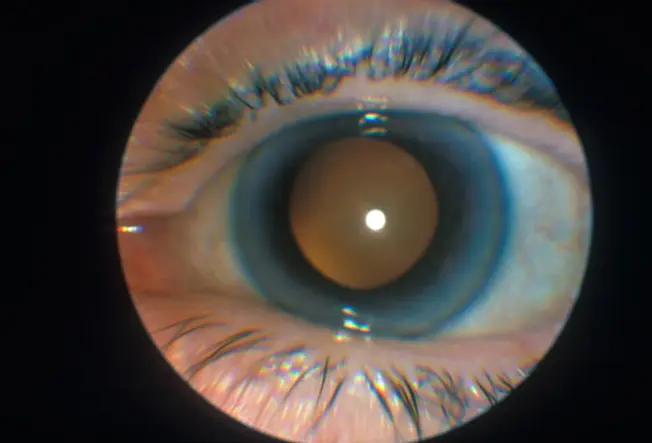
Cataracts: What Happens
19/32
A healthy lens focuses light into a single spot on your retina. It captures the image like motion picture in a camera. As you age, protein builds up in the lens. It gets cloudy and sends scattered rays of light to your retina. Instead of 1 sharp clear image you get blurred vision, changes in color vision, and glare, peculiarly at night. Avant-garde cataracts are like shooting fish in a barrel to encounter. It's the muddy-colored circumvolve at the middle of this picture.

Retinitis Pigmentosa (RP)
xx/32
You tin can inherit this disorder from your parents. Information technology oft begins with night vision issues. Next comes a irksome loss of side vision. That becomes tunnel vision and finally, in some cases, blindness. It'due south uncertain whether vitamin A and/or fish oil supplements help improve this status. More research is needed.
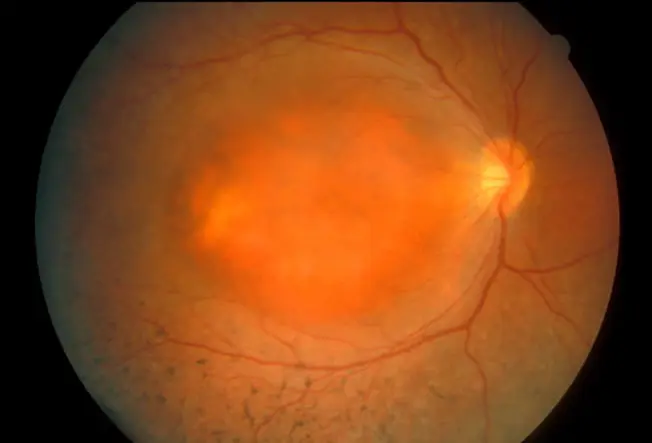
Retinitis Pigmentosa: What Happens
21/32
The low-cal-sensitive tissue of the retina slowly breaks downward over many years. As that happens, it no longer sends signals to your brain, and you lose some vision. Center exams show abnormal dark spots (pigments) sprinkled effectually the retina. Early cataracts can as well happen, along with a swelling of the retina chosen macular edema (the central orange mass shown here).

Floaters and Specks
22/32
Do yous see blurry spots or specks that move? They're probably floaters -- droppings in your eye's vitreous gel. They don't cake vision and are easier to see in brilliant lite. Floaters are common and usually harmless. See a doctor right abroad if:
- They show up or multiply suddenly.
- You also see flashes of light.
- You encounter white or black spots all the time.
- You notice a sudden shadow or loss of side vision.
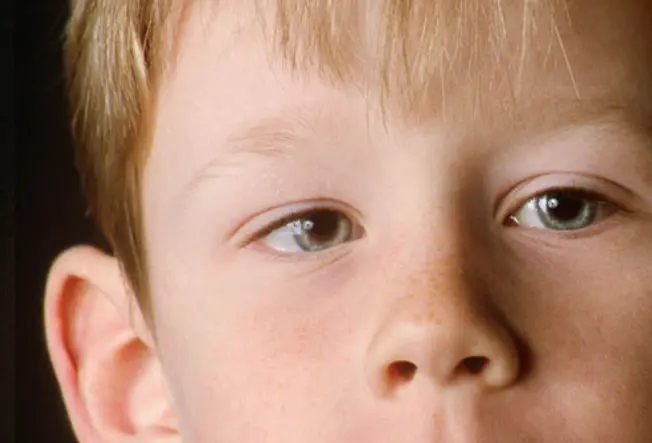
Amblyopia (Lazy Eye)
23/32
When you're a kid, if one centre doesn't run into well, your brain may favor the other. This condition, called amblyopia, tin happen if your eyes aren't aligned right (strabismus or crossed eyes) or one eye just doesn't piece of work too. The medico will prescribe a patch or drops that mistiness vision in the "good" eye. This prompts your brain to utilise the other centre. If amblyopia isn't treated during childhood, information technology can cause permanent vision loss.
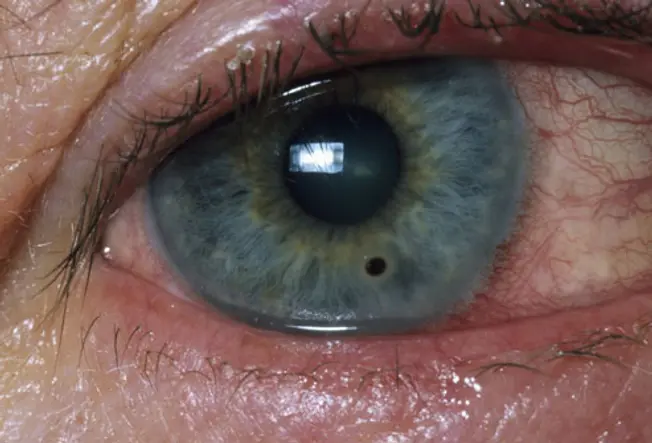
Object in the Center
24/32
Because so many nerve endings prevarication just below the surface or your cornea, even a tiny speck can exist painful. Don't rub your center, or you could crusade serious damage. Wash it with non preserved sterile saline solution -- practice non use regular tap water. If the object doesn't move, telephone call a md. They tin remove it and requite you antibody drops to prevent an infection.

Tears and Dry Eye
25/32
Tears keep your eyes moist. Sometimes you don't have enough, either from dry out air, aging, or other health conditions. Your optics tin get painful and irritated. Centre drops labeled artificial tears may exercise the play a joke on for a mild case. If it's a bigger problem, you may benefit from other treatments, medications or nutritional supplements

Pinkeye (Conjunctivitis)
26/32
This inflammation results from a virus, leaner, irritant, or an allergic reaction. Your eye will get cerise and itch or burn. Y'all'll also detect a gunky discharge. If your middle itches an allergy is probably to blame. The type yous catch from other people is usually viral, so you lot won't need antibiotics. If your pinkeye is caused by leaner, the doctor will give yous antibiotic eye drops. Pinkeye can be very contagious, then wash your hands frequently while you expect for information technology to clear up.
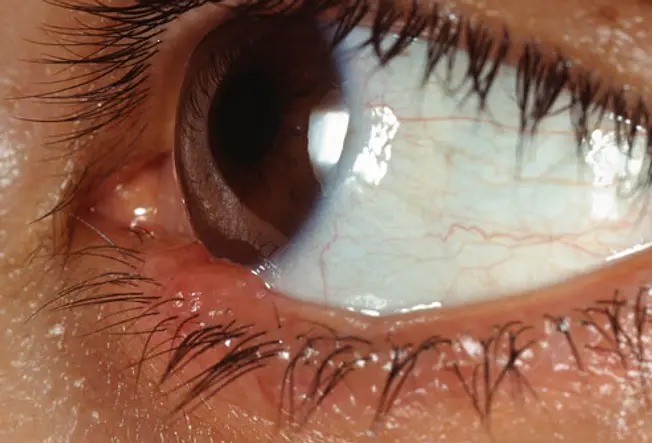
Stye
27/32
This painful red bump looks like a pimple on or about the border of your eyelid. It's a blazon of infection of the eyelids (the md will telephone call information technology blepharitis). Styes usually heal in a week. You can speed things up by putting a warm, wet shrink on it iii to 6 times a day. Don't vesture contacts or eye makeup until it heals.
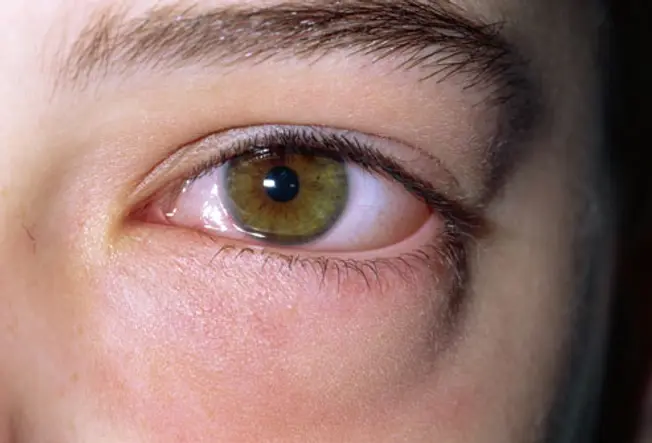
Allergies
28/32
They can cause itchy, watery optics. Pollen, grass, dust, weeds, and pet dander are common triggers. An allergy doctor can tell you what's to blame for yours. Go on your windows shut at dwelling and in your car. You lot can get special pillow and mattress covers to keep allergens out. Clean your house thoroughly and employ allergen filters in your furnace and air conditioner. Allergy heart drops, bogus tears, and antihistamines may help.
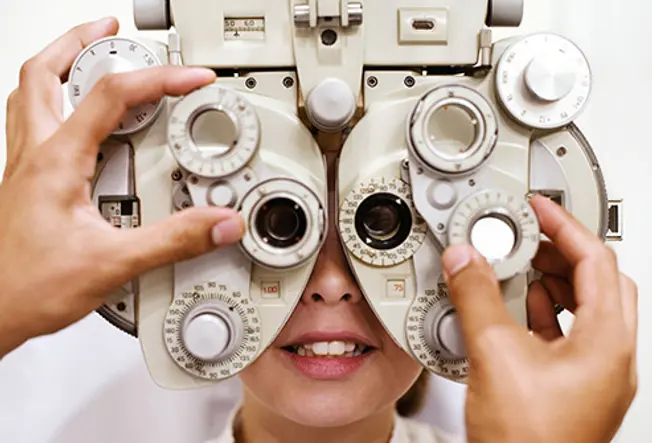
Keep Upwardly With Your Eye Exams
29/32
You need regular checkups all through your life, particularly if eye problems run in your family or if you have other risk factors. An eye test tin also detect other problems, like diabetes and high blood pressure, or even a stroke or brain tumor. Bulging optics tin signal thyroid disease. A yellow tint in the whites of your eyes might be a sign of liver problems.
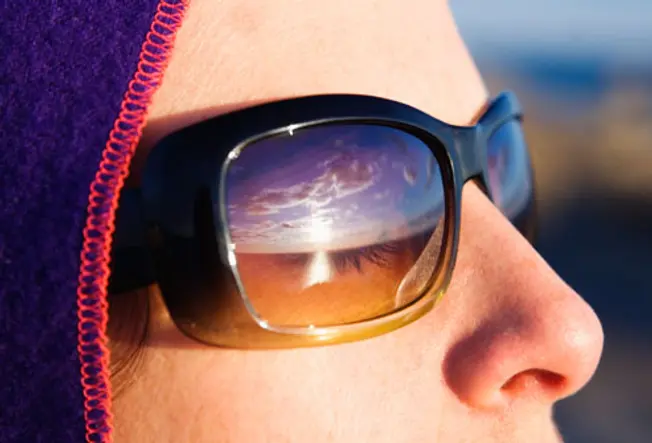
Prevent Lord's day Impairment
30/32
UV rays tin can harm your optics. Exposure can cause you to get cataracts 8-10 years earlier than normal. Simply 1 long session in the sun tin cause very painful irritation of your corneas. So article of clothing a hat and sunglasses that block UV rays. You tin add together a clear, protective UV-blocking moving picture to your car's side windows, besides. If you have light-colored eyes you may be more than sensitive to light. If it of a sudden starts to bother you more than usual, telephone call your centre doc.

Stay Safe at Home
31/32
Grease splatters from a pan, yard debris flies upward from the backyard mower, cleaning solution splashes in a saucepan. Some of the greatest heart hazards are in the domicile. Eye doctors propose everyone keep a pair of protective eyewear at dwelling. Look for i approved past the American National Standards Institute. Fifty-fifty if an heart injury seems minor, go to the emergency room or your middle doctor correct abroad to become it checked out.

Foods for Eye Wellness
32/32
Carrots really are good for your eyes. So are spinach, nuts, oranges, beefiness, fish, whole grains, many other things that brand up a healthy diet. Look for foods with antioxidants like omega-3 fat acids; vitamins C, E, and beta-carotene; also as zinc, lutein, and zeaxanthin.
IMAGES PROVIDED BY: 1) Dan McCoy/Science Faction REFERENCES: National Eye Health Education Programme, National Eye Institute. News release, National Eye Institute. American Optometric Clan: "Optometric Clinical Do Guideline Care of the Patient with Hyperopia." EyeCare America, The Foundation of the American Academy of Ophthalmology. McBrien, North. Optometry and Vision Science, 2009. American Academy of Ophthalmology: "Is LASIK for me? A Patient's Guide to Refractive Surgery." EyeSmart, Academy of Ophthalmology: "Heart Injuries at Home." Emory Centre Middle: "Eye Weather condition" and "Glaucoma." Lighthouse International: "Vision Disorders." Johns Hopkins Medicine, Wilmer Eye Institute: "Eye Conditions." American Optometric Association: "Middle & Vision Bug." American Academy of Ophthalmology: "Diseases & Conditions A to Z," "Symptoms," "Living Eye Smart." National Eye Found: "Eye Health Tips." Genetics Dwelling house Reference: "Retinitis pigmentosa." Kids Health from Nemours: "Styes." Prove Sources
2) Scientific discipline And Lodge Picture Library
3) Anna Webb/WebMD
iv) Steve Pomberg/WebMD
5) Steve Pomberg/WebMD
6) BSIP/Photo Researchers, Inc
7) BSIP/Photo Researchers, Inc
8) BSIP/Photograph Researchers, Inc
9) Chris Barry / Phototake
10) Getty Images
eleven) ISM / Phototake
12) Getty Images
13) William Feig/Phototake
14) WebMD
15) WebMD
sixteen) Getty Images
17) Jean-Luc Kokel / Photo Researchers, Inc
18) Getty Images
xix) Watney Collection / Phototake
xx) Getty Images
21) ISM / Phototake
22) iStock
23) Carolyn A. McKeone / Photo Researchers, Inc.
24) Dr P. Marazzi / Photo Researchers, Inc.
25) G. Fermariello/De Agostini Pic Library
26) Getty Images
27) Pulse Film Library/CMP Images / Phototake
28) Dr. P. Marazzi / Photograph Researchers, Inc.
29) Getty Images
30) Anthony Saffery/Workbook Stock
31) Getty Images
32) Image Source
Source: https://www.webmd.com/eye-health/ss/slideshow-eye-conditions-overview
0 Response to "When the Drivers Field of Vision Becomes Dim Again He or She May See Only"
Post a Comment